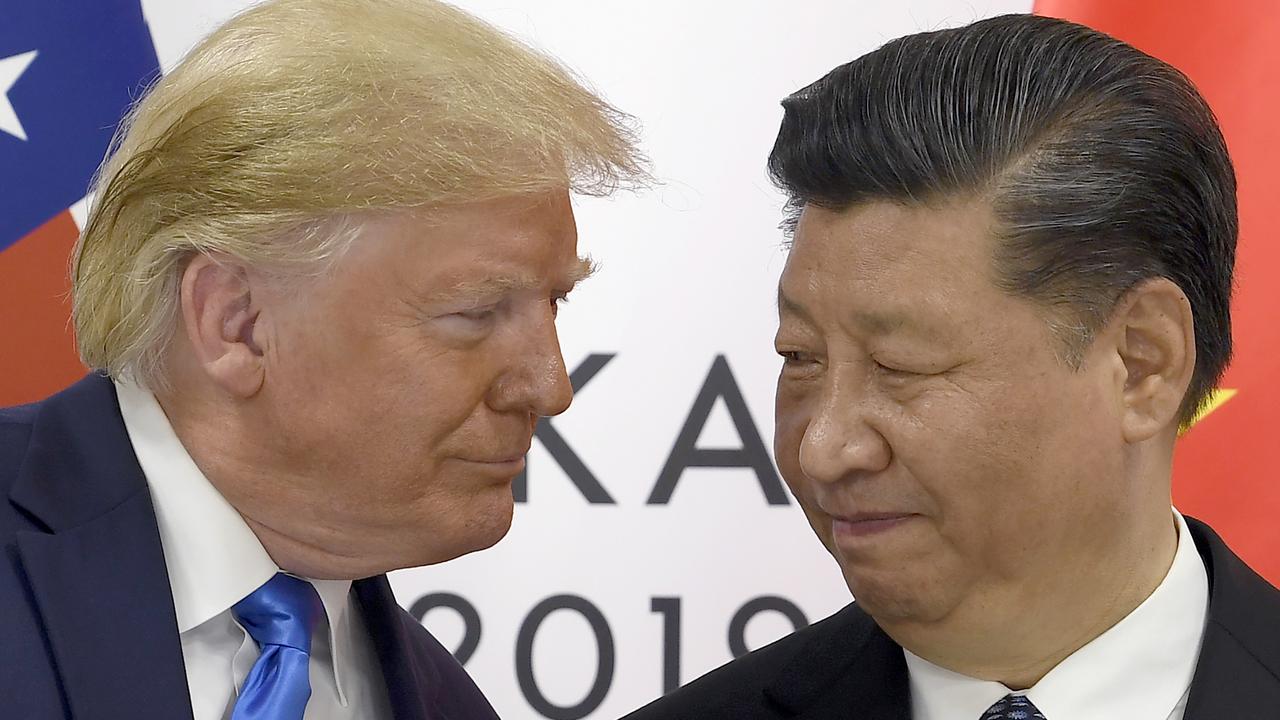More Than Representation: Demanding Authentic Asian And Asian American Narratives In Media

Table of Contents
The Perpetuation of Harmful Stereotypes in Media
Media often presents a limited and distorted view of Asian and Asian American communities, perpetuating harmful stereotypes that impact how we are perceived and how we perceive ourselves.
The "Model Minority" Myth and its Dangers
The "model minority" myth portrays Asian Americans as inherently successful, hardworking, and docile. While seemingly positive, this stereotype is incredibly damaging.
- Limits discussions about socioeconomic disparities: It masks the struggles faced by many Asian Americans, including poverty, discrimination, and lack of access to resources. The reality is far more nuanced than this simplistic portrayal.
- Creates unrealistic expectations: This myth places immense pressure on individuals to conform to an unattainable ideal, leading to mental health issues and feelings of inadequacy.
- Fosters internalized oppression: Individuals may internalize these expectations, leading to self-criticism and a reluctance to acknowledge struggles.
- Ignores intersectionality: It fails to account for the diverse experiences of Asian Americans based on factors like immigration status, gender, sexual orientation, and class.
Examples of this stereotype in media include the overrepresentation of Asian Americans in high-achieving roles without acknowledging the systemic barriers they might have overcome. The lack of portrayal of struggling Asian families further reinforces this harmful narrative.
Other Damaging Stereotypes
Beyond the "model minority" myth, other damaging stereotypes persist:
- The hypersexualized Asian woman: Often depicted as submissive, exotic, and available, this stereotype reduces Asian women to objects of male desire and ignores their agency and individuality. Think of the countless instances of "dragon lady" archetypes.
- The emasculated Asian man: Frequently portrayed as nerdy, effeminate, or lacking masculinity, this stereotype undermines Asian men's strength and self-worth. This reinforces negative perceptions of Asian masculinity.
- The villainous or mysterious Asian character: This stereotype casts Asians as inherently suspicious, cunning, or threatening, contributing to broader xenophobic sentiments. This trope often serves as a shortcut to portraying antagonists without engaging with actual motivations.
These stereotypes reinforce negative biases and contribute to discrimination in various aspects of life. They impact self-esteem, mental health, and social interactions within and outside the Asian American community.
The Lack of Nuanced Characters
The lack of nuanced characters prevents genuine understanding and empathy. We see a dearth of characters with complex motivations, internal conflicts, and relatable flaws.
- Importance of multi-faceted characters: Authentic storytelling requires portraying individuals with diverse personalities, struggles, and aspirations. They should be fully realized characters, not mere plot devices.
- Examples of positive counter-narratives: While limited, there are examples of positive counter-narratives emerging. These portrayals showcase the breadth and depth of the Asian and Asian American experience, moving beyond stereotypes. Highlighting these examples is crucial.
Without such portrayals, authentic Asian representation remains elusive, hindering genuine cross-cultural understanding.
The Importance of Authentic Asian and Asian American Storytelling
Moving beyond harmful stereotypes requires a fundamental shift in how Asian and Asian American stories are told.
Amplifying Asian and Asian American Voices
The most critical step is to empower Asian and Asian American creators.
- Diverse perspectives behind the camera: Involving Asian and Asian American writers, directors, producers, and actors ensures authentic representation and nuanced storytelling. This is not simply about casting; it's about control and creative vision.
- Value of lived experience: Lived experience is invaluable in crafting authentic narratives that resonate with the community and challenge harmful stereotypes. This ensures stories aren't told about the community but by the community.
Showcasing the Diversity of Asian Cultures
The Asian diaspora encompasses a vast array of cultures, languages, and traditions.
- Richness and diversity of Asian experiences: Accurate portrayal requires acknowledging and celebrating the unique characteristics of each culture, avoiding generalizations and harmful stereotypes. Pan-Asianism is a dangerous simplification.
- Misrepresentation and correct portrayals: Highlighting specific examples of misrepresentation and contrasting them with accurate portrayals underscores the importance of specificity and sensitivity in media.
Beyond Representation: Meaningful Inclusion
Authentic narratives explore the full spectrum of human experiences within the Asian and Asian American community.
- Narratives addressing relevant social and political issues: Stories must address complex issues like immigration, racism, cultural identity, mental health, socioeconomic disparities, and LGBTQ+ experiences within the community. This ensures a holistic portrayal that goes beyond surface-level representation.
How to Demand and Support Authentic Asian and Asian American Narratives
Each of us plays a role in demanding and supporting authentic narratives.
Support Asian and Asian American Creators
Actively seek out and support media created by Asian and Asian American artists.
- Supporting independent filmmakers, actors, and writers: Consider watching independent films, streaming shows, and plays created by Asian and Asian American artists. Support their work through donations, reviews, and word-of-mouth.
- Platforms and organizations promoting diverse voices: Identify and promote platforms, organizations, and initiatives that champion Asian and Asian American voices.
Engage in Critical Media Consumption
Critically analyze media representations and challenge harmful stereotypes.
- Constructive criticism: Engage in constructive criticism by writing letters to producers, leaving thoughtful reviews, and initiating discussions on social media. Don't be afraid to voice your concerns.
- Initiating conversations: Start conversations with friends, family, and colleagues about the importance of authentic Asian representation.
Demand Better Representation from Media Companies
Contact media companies directly and demand more authentic and inclusive representation.
- Successful campaigns demanding better representation: Learn from and support existing campaigns that advocate for better representation in the media. Organize, participate, and be vocal.
Conclusion
The fight for authentic Asian and Asian American narratives in media is not just about representation; it’s about achieving genuine inclusion and challenging harmful stereotypes. By amplifying diverse voices, supporting creators, and engaging in critical media consumption, we can demand a media landscape that reflects the richness and complexity of our community. Let’s continue to actively seek out and champion more authentic Asian and Asian American narratives, ensuring that future generations see themselves reflected accurately and positively in the media they consume. Let's move beyond mere representation and demand true and meaningful authentic Asian and Asian American narratives.

Featured Posts
-
 John Wick 5 Update New Details Revealed Release Date A Mystery
May 12, 2025
John Wick 5 Update New Details Revealed Release Date A Mystery
May 12, 2025 -
 Us China Trade Talks Market Reaction Will Determine Success
May 12, 2025
Us China Trade Talks Market Reaction Will Determine Success
May 12, 2025 -
 New Approach Netherlands To Utilize Low Security Detention And Area Restrictions For Managing Asylum Seekers
May 12, 2025
New Approach Netherlands To Utilize Low Security Detention And Area Restrictions For Managing Asylum Seekers
May 12, 2025 -
 Inside Prince Andrews Palace Life Accounts Of A Difficult Personality
May 12, 2025
Inside Prince Andrews Palace Life Accounts Of A Difficult Personality
May 12, 2025 -
 Lily Collins Stars In A Sexy Calvin Klein Campaign See The Photos
May 12, 2025
Lily Collins Stars In A Sexy Calvin Klein Campaign See The Photos
May 12, 2025
